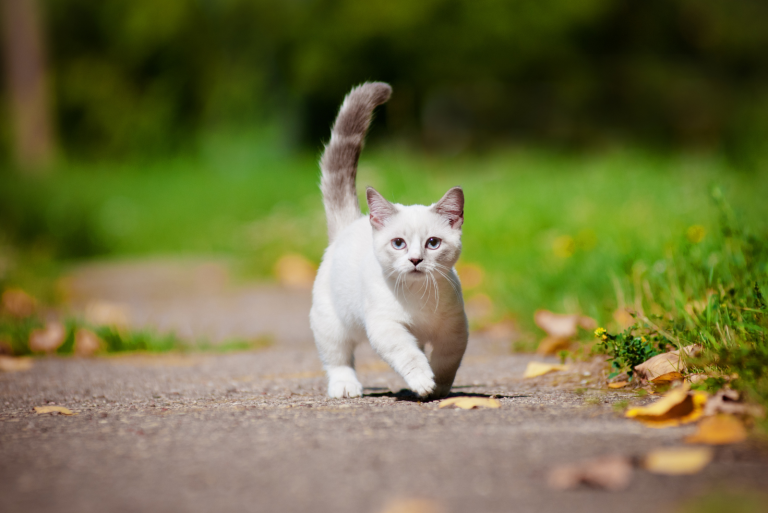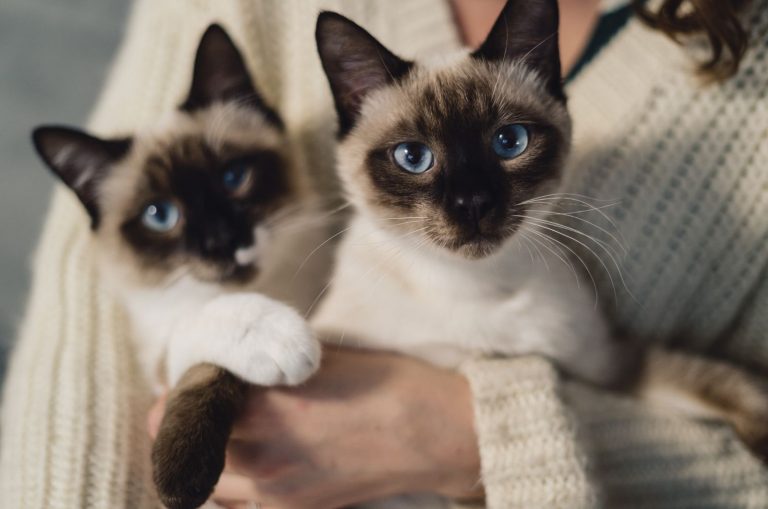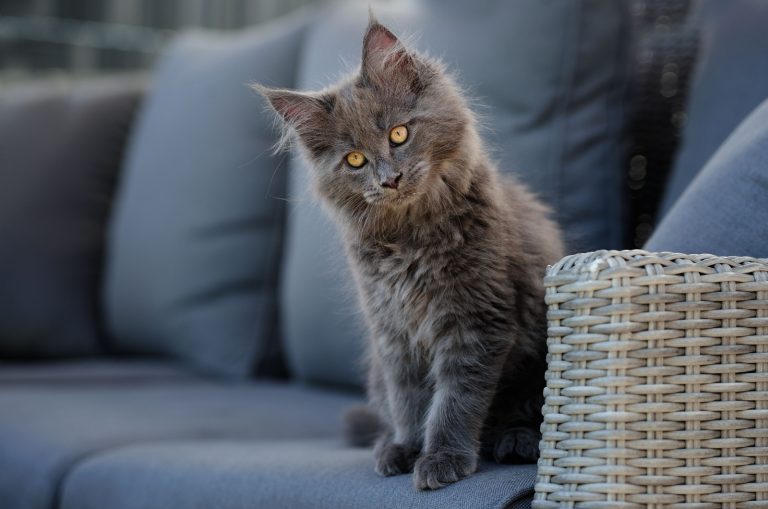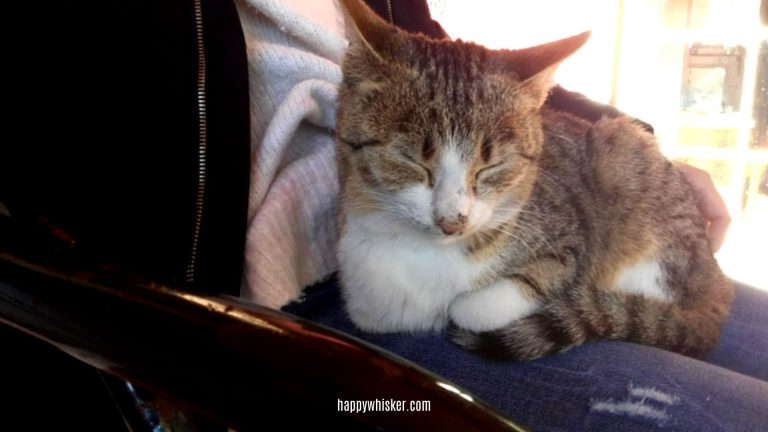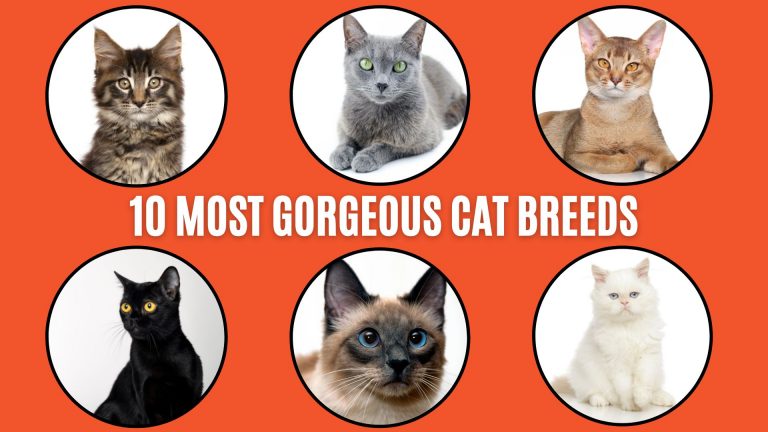A Furry Comparison: Norwegian Forest Cat Vs Maine Coon
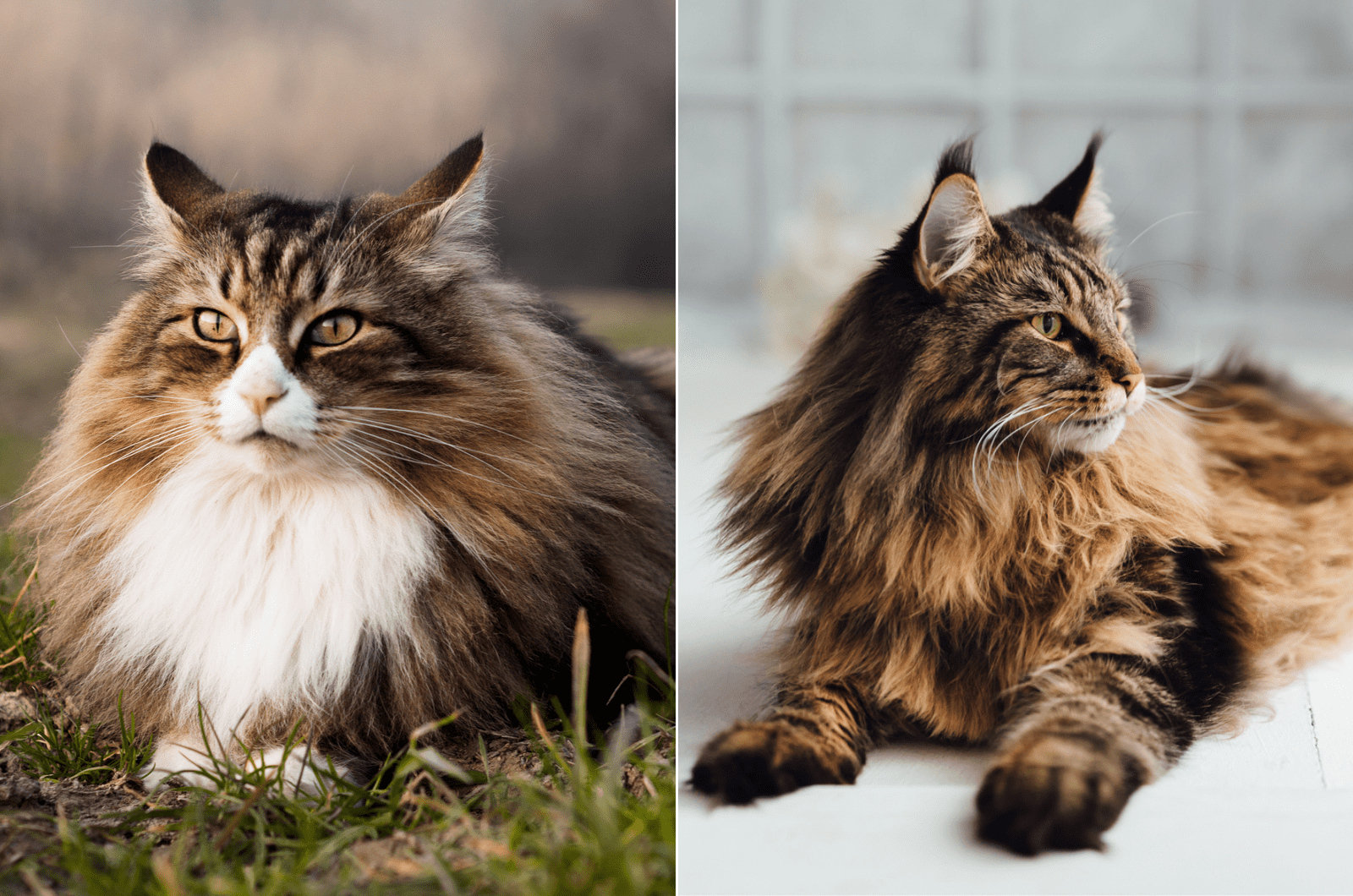
This post contains affiliate links, and I will be compensated if you make a purchase after clicking on my links, at no extra cost to you.
Maine Coon vs Norwegian Forest cat, or rather Norwegian forest cat + Maine Coon. They look like they were related, and some experts even claim that there is some mixing in their ancestry, i.e. that the Maine Coon cat breed is a descendant of the Norwegian cat breed.
Both these breeds are fluffy, long-haired, big cats. There are similarities and differences between the Norwegian Forest cat vs Maine Coon.
Whether you just want to expand your knowledge, or perhaps you’re looking to buy one of these two breeds, I hope that this article provides you with all the information you need about the Norwegian Forest cat vs Maine Coon cat breeds.
Norwegian Forest Cat Vs Maine Coon: Similarities & Differences

According to breeders, the most noticeable difference between Norwegian Forest cat vs Maine Coon is their legs, specifically the length of their legs. The Norwegian Forest cat’s hind legs are longer than the front, while the Maine Coon’s legs are all the same length.
However, this is not something that is visible right away, and not all cats will let you touch their legs, let alone measure them! The main difference between Maine Coons and Norwegian Forest Cats is their eye shape and size.
Maine Coons have large, oval-shaped eyes, while Norwegian Forest Cats have eyes shaped like almonds. Norwegian Forest cats are also more active, whereas Maine Coons are more affectionate which is why they’re called gentle giants. Norwegian Forest cats may be slightly less affectionate, but they are both great for families and are good with other pets.
The Norwegian Forest Cat is similar to the Maine Coon in color, but they tend to have more possible varieties. These two breeds are both beautiful long-haired cats, now let’s see what other similarities and differences they share.
[table id=68 /]
Maine Coon Cat’s Origin
There are different stories that claim to be the origin of the Maine Coon cat breed. One of them states that Maine Coons arrived to America with Vikings because they were tremendous mousers (which is true).
There is also a story that Marie Antoinette sent her cats to the state of Maine in America, and among them were Persian cats, Turkish Angoras, and Siberian cats. It is thought that these cats mated and produced semi-long-haired cats which were later called Maine Coons, because of the state’s name.
However, the origin tale I like the most is the one about Captain Coon. People used to believe that Captain Coon stopped in Maine, and that the cats from his ship mated with other cats. As his name was Coon and the state’s name was Maine, the new breed became known as the Maine Coon cats.
Norwegian Forest Cat’s Origin
The Norwegian Forest cat breed, also referred to as Skogkatt or Wedgie, was almost extinct in the early 1900s, but it was preserved by a breeding program in the 1930s.
This cat breed is mentioned in Norse mythology as the cats who chased mice on Vikings’ ships (which is also said of Maine Coons) and it is said that they came from Scandinavia on these Viking ships.
One of the theories is that Norwegian Forest Cats descended from Turkish Angoras and Siberian cats. In modern times, this cat breed has been the official cat of Norway for more than 50 years, since king Olaf proclaimed it.
Personality Traits
Personality is where these two breeds differ. Maine Coons are more playful and outgoing than Norwegian Forest cats. They love to play and they enjoy receiving attention from their humans, whereas Norwegian Forest cats are less sociable, more laid back, and not so outgoing. They tend to quickly lose interest in playtime and are often seen as lazy cats because of it.
This only comes to the fore when compared to Maine Coons; generally speaking, Norwegian Forest cats are also exceptionally social and affectionate.
Both of these breeds are intelligent, and they can be trained. They can even be walked on a leash as they are both known for their dog-like behavior. They love the outdoors, and you may see them climbing trees to look down on the world from their high perch..
Norwegian Forest Cats are not demanding or noisy; they usually only meow when they need something. If you were to leave a Norwegian Forest cat on its own, it would definitely meow to get your attention. Maine Coons, on the other hand, are much more talkative and are known for their chirps and meows.
Norwegian Forest cats are more independent, whereas Maine Coons want all the attention they can get from their humans. Norwegian Forest cats are more active and energetic, so they need to be entertained more than Maine Coons.
Appearance, Size & Body Shape

At a first glance, their physical appearance can look the same, especially if they appear in similar colors. However there are some physical traits that make them different, which are easily noticed once you learn about them.
Heads & Tails
The Norwegian Forest cat has a somewhat triangular head shape whereas the Maine Coon’s head is square-shaped. The profile of the Norwegian Forest cat is longer and it looks straight from its straight nose to its big, flat forehead. They have a triangular face, whereas a Maine Coon has more pronounced, high cheekbones.
The tail of a Norwegian Forest cat is neat and looks groomed, while the bushy tail of a Maine Coon looks a bit messy and furry, with a fluffy tip. Both of them have long tails, usually as long as the distance from their shoulders to their tails.
Ears & Eyes
One of Maine Coon’s most distinctive features is its large, pointy ears with hairs on the tips which resemble the lynx cats. Their ears are set widely apart standing high on their heads, whereas Norwegian Forest cats have smaller ears that are rounded on top, and they are set more toward the sides of their heads. Both of these large breeds have ear tufts as well, which is quite cute and welcome in a cat’s world, whereas in humans it is fairly unattractive… lol
Norwegian Forest cats have almond-shaped eyes, while Maine Coons have oval-shaped eyes that are quite large compared to other domestic cat breeds.
Body Shape & Size
Both of these cat breeds are large in size, but the Maine Coon is bigger. Male Maine Coons’ weight can go up to 25lbs, whereas male Norwegian Forest cats can weigh up to 20 lbs. Females are smaller; Norwegian Forest female cats can weigh a maximum of 15 lbs, and female Maine Coons weigh up to 18 lbs.
Maine Coons are known as very large domestic cats, they have medium-long legs with hair tufts between their toe beans. Maine Coons have quite long bodies, whereas Norwegian Forest cats aren’t so long. Norwegian Forest cats have higher hips, since their hind legs are longer than their front legs, and they also have hair tufts in between the toe beans.
Fur, Coat Patterns & Colors
Both cat breeds have beautiful fur and thick hair. Maine Coon cats have a silky coat that feels soft and smooth, and Norwegian Forest cats have a water-repellent coat which is also long and thick, but it resembles a mane around their necks.
Norwegian Forest cats have a double coat and an undercoat, and Maine Coons are long-haired with a short hair or medium-length undercoat and also a ruff, but it is considerably smaller than the one Norwegian Forest cats have. Both of these breeds can come in a variety of colors; they can be black, white, cream, blue, etc., but Norwegian Forest cats can have red markings as well. The CFA (Cat Fanciers Association) recognizes 60 Norwegian Forest cat colors, and 80 colors in Maine Coon cats, however, Norwegian Forest cats have more pattern varieties.
Both Maine Coons and Norwegian Forest cats require regular combing, brushing and grooming. You must do this to prevent matting, and to remove any dead skin cells, or dead hairs. The more hair you brush out, the less your cat will shed around the house. This will also prevent your cat from having furball issues.
You also need to brush, clean, and cut their paw fur, since this is the fur that mostly ends up as a furball stuck in your cat’s digestive system.
These cat breeds love grooming sessions, which is good for their health and their looks. It is best if you begin grooming and bathing your cat at a young age, so it gets used to it. Many veterinarians recommend that you brush or comb your cat twice a week, but I would suggest that you double this during your cat’s shedding season.
When choosing cat shampoos, always opt for water-based shampoos that are free of harmful chemicals and designed for long-haired cats. Ideally they should also offer protection from fleas. You can bathe your cat, either a Maine Coon or a Norwegian Forest cat, every seven or eight weeks, or even every four to six weeks according to the National Cat Groomers Institute of America. Norwegian Forest cats are less comfortable around water than Maine Coons.
Health & Nutrition
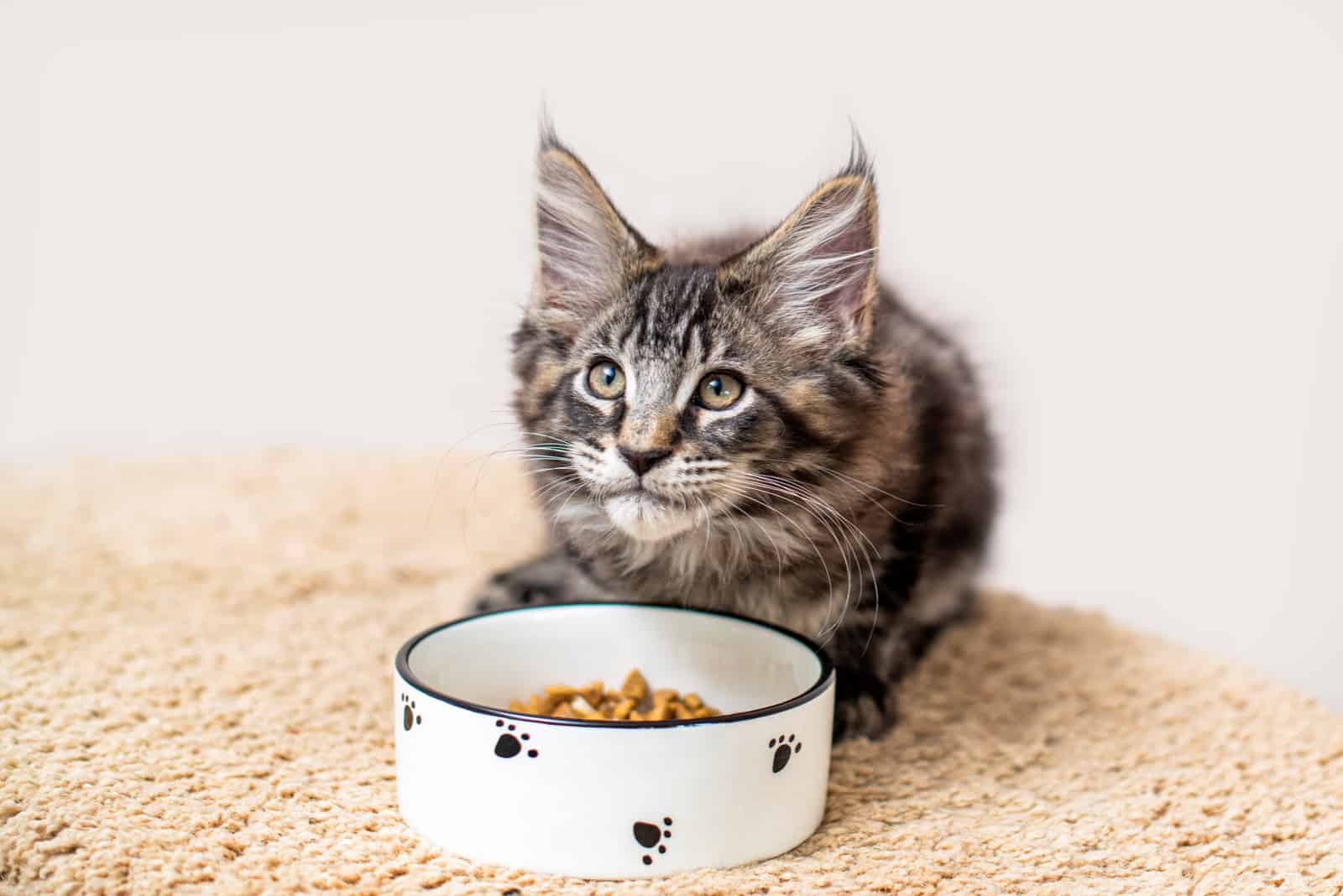
Both of these breeds are typically healthy, but all larger breeds are prone to some diseases and health issues, usually genetic. Both Maine Coons and Norwegian Forest cats are predisposed to hip dysplasia, but this can be monitored and prevented if you screen and test your cat regularly.
These two breeds are also predisposed to a disease called PKD i.e. polycystic kidney disease. This is usually hereditary and it can be treated.
The two breeds are also prone to a condition which is usually associated with the Maine Coon cat breed: HCM (hypertrophic cardiomyopathy), which is also hereditary.
Maine Coons are also predisposed to SMA (spinal muscular atrophy). Their leg muscles weaken as they age, and this results in bent posture or having issues when walking.
Norwegian Forest cats are prone to glycogen storage, i.e. they don’t have enough enzymes that are needed to metabolize glycogen. Norwegian Forest male cats are, according to different studies, more prone to diabetes than other cats.
Nutrition
Usually, both of these breeds will tolerate any cat food, especially while they’re young. Dry food tends to be a lot cheaper than wet food, but cat breeds that are prone to kidney issues like these ones might need some cat food for kidney function included in their diet.
Both these cat breeds are large, so it is normal that they will eat more than other domestic cat breeds. It is also logical that the Maine Coon cat will eat a bit more than the Norwegian Forest Cat.
It is always good to mix dry food and wet food so your cat has a mixed diet plan. I do this for my cats as well, since wet food delivers more protein than dry food, and I always look for meat-based cat foods.
You also need to pay attention to your cat’s water intake, Maine Coons and Norwegian Forest cats are large and can get dehydrated faster than other cats. Beware of your water bowl choice, so they can’t knock them over and spill their water.
Living Habits
Both of these cat breeds are territorial, but a Maine Coon also enjoys the company of another cat, while the Norwegian Forest cat cherishes its privacy. They are also not that tolerant when being picked up. They like to choose their company, and also cuddle buddies, by themselves. Maine Coons are more tolerant, and they love being picked up and held.
Both these breeds are active and playful, and they both require entertainment. However, Maine Coons can get anxious and depressed when left alone for longer periods of time, while Norwegian Forest cats will appreciate some alone time.
Both of these breeds love entertainment, and cat trees and other toys are not only welcome, but required. It is also a good idea to get scratching posts (always look for ones with sisal rope), to prevent them from scratching around the house.
You do need to consider that these large cat breeds require large cat trees since they need to be able to climb, sit, or nap in them without knocking them over. There are many options to choose from, and you can easily find a cat tree that is designed for larger cats and that has scratching posts included.
Have in mind that Maine Coons usually require more playtime than Norwegian Forest Cats.
Adapting To Climates
At a first glance, you know that both of these breeds prefer cold climates since both of them have long coats.
However, Maine Coons are much better at adapting to warmer climates than Norwegian Forest cats. In general, neither of them will be too happy when warm and humid weather comes and they will have more trouble adapting to warm weather than other domestic cat breeds.
If you live in a warm climate and you have one of these cat breeds as a pet, it is a good idea to install air conditioning, if possible. When it comes time for outdoor activities, choose the time and the place carefully, i.e. choose a time of day when it’s not too hot to let your cat out, and always check if there are enough spots in the shade for your furry friend.
Life Expectancy
Norwegian Forest cats are expected to live a little longer than Maine Coons; their life expectancy is from 12 to 15 years, while Norwegian Forest cats’ usual lifespan is 16 years of age. However, this is just a general estimate; there are cats of each of these breeds that have lived far longer than their expected lifespan.
Breeders & Prices
You need to find reputable and registered breeders, whenever you want to buy a purebred cat, no matter the breed, be it a Maine Coon or a Norwegian Forest Cat. The price will vary depending on the cat’s age, breed standards, breeder’s rules, and of course the location of the cattery.
Norwegian Forest cats are usually less expensive than Maine Coon cats in the USA. Their breeding process, food, paperwork, etc. costs a lot so their price is quite high.
Norwegian Forest cats’ price usually ranges from $800 to $1500, while the average price of a Maine Coon varies between $1000 and $2K and they can cost a lot more depending on the breeder and location.
FAQ
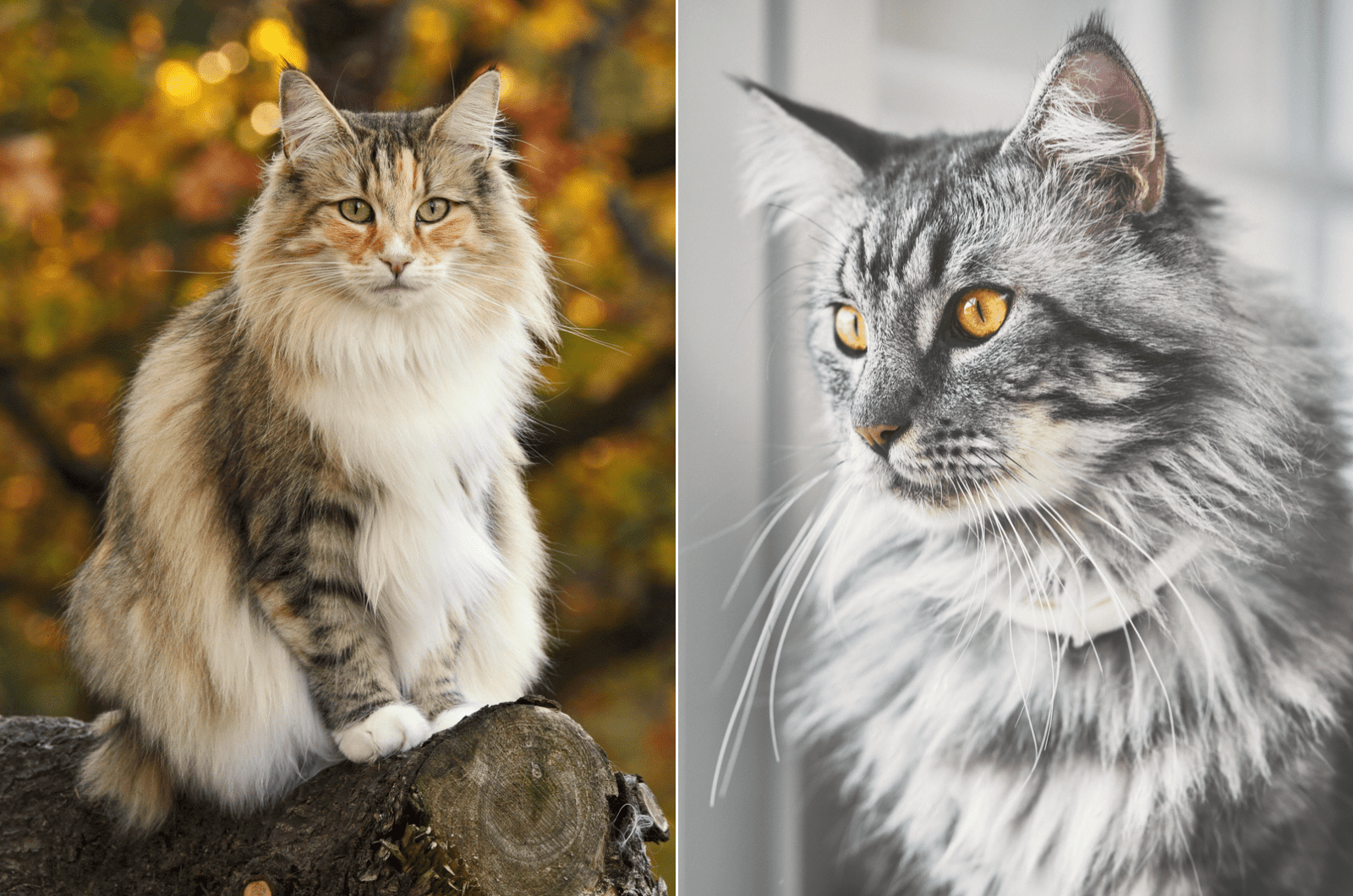
Which is bigger a Maine Coon or a Norwegian Forest Cat?
Both of these breeds are large, but the Maine Coon is a bigger breed than the Norwegian Forest Cat.
Male Maine Coons can have a weight of up to 25lbs, whereas male Norwegian Forest cats can weigh a maximum 20 lbs. Females are smaller; female Norwegian Forest cats can weigh a maximum 15 lbs, and female Maine Coons weigh up to 18 lbs.
What breed of cat is bigger than a Maine Coon?
Savannah cat breed. This cat breed is a hybrid, it is a mixed breed between a domestic cat and a wild Serval cat.
What is the difference between a Norwegian Forest Cat and a Maine Coon?
The main difference between these two breeds: Norwegian Forest cat vs Maine Coon cat is the shape of their heads and eyes. Norwegian Forest Cats have a triangular head shape and almond-shaped eyes, whereas a Maine Coon has a square-shaped head and large, oval-shaped eyes.
What is a Norwegian Forest Cat’s temperament?
Norwegian Forest cats have a gentle, kind, and loving temperament. They are calm, loyal, and moderately playful cats. They are also very affectionate cats that form strong bonds with their owners. These cats are great as family pets because they are friendly towards people and other pets.
What is the average weight of a Maine Coon?
Generally speaking male Maine Coons can weigh up to 25lbs, and female Maine Coons weigh up to 18 lbs.
Do Norwegian Forest Cats live in the forest?
No, they don’t. Norwegian Forest cats are so called because in the past they used to live in the forests, and were quite popular on farms because of their good hunting abilities. Nowadays they are domestic cats which are usually kept indoors, but you may still see some farmers keeping them as outdoor pets as well.
Final Words
These two large breeds of cat have some similarities but also some differences. Key differences between the Norwegian Forest Cat vs Maine Coon breeds are:
• length of their legs
• eye and head shape
• overall size
• ears and tails
• food quantity
• price range
Their main similarities are portrayed through their personality traits, coat length and colors, origin tales, health records, living habits, and expected lifespans.
Both of these cat breeds make great lap cats, are good for families, and generally make great pets. Perhaps you want to choose one of these as a pet, and I know from experience that it is not an easy task choosing the best cat for yourself.
Cat owners of both of these breeds are quite satisfied, and I can say that a home with any cat is a happier home than the one without a cat. So I am sure that whichever cat breed you choose, you won’t be sorry.

